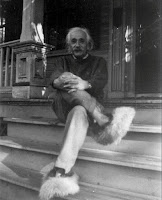He pointed out that Native Americans do not view the Fourth of July in the same way as other American. Rather than a celebration of liberty, it is commemorated with indigenous practices revived after long, slow and ongoing genocide, occupation, apartheid, and erasure.
Consolidating these disparate ideas, Seven said: We have life, or some version of it, and civil liberties but only when we fight for them. And the carrot dangled in front of us, cradle to grave, is just this: Life, Liberty and the PURSUIT of Happiness. I am a merry Can or, as some would say, an AmeriCan't.
Wishing to both break the ice and introduce the subtext of the poem, and given that we were at the Philosophical Research Society, Seven led with a brief philosophical riddle: A merry Can or A merry CON? "If you're American when you arrive, and American when you leave, what are you when you're in the bathroom?" (European).
Or, a vision in a dream. A Fragrance.
In Xanadu did Kubla Khan
A stately pleasure-dome decree:
A state of her own pleasure decree:
Where Alph, the sacred river, ran
Where white the moistened waters ran
Through caverns measureless to man
Through a cavern immeasurable to man
Down to a sunless sea.
Down to a sunless deep.
So twice five miles of fertile ground
Thus twice divide child's fertile mound
With walls and towers were girdled round;
And there were gardens bright with sinuous rills,
And here were toys bright with bells 'n whistles,
Where blossomed many an incense-bearing tree;
Where unraveled many an ecstasy;
And here were forests ancient as the hills,
And there were garters damp as the dills Enfolding sunny spots of greenery.
Below folds, a narrow strip of slippery.
But oh! that deep romantic chasm which slanted
But O! that deep romantic chasm which slanted
Down the green hill athwart a cedarn cover!
Down into potent still under wood that hovered! A savage place! as holy and enchanted
A savage gash! a hole enchanted
As e’er beneath a waning moon was haunted
As air breathed by waxing moon that taunted
By woman wailing for her demon-lover!
Cries of a woman wailing for her deadened-lover!
And from this chasm, with ceaseless turmoil seething,
And round this chasm, with unceasing circles seething,
As if this earth in fast thick pants were breathing,
As if this post into moist thick pants were seeping,
A mighty fountain momently was forced:
A mighty fountain momently was forced: Amid whose swift half-intermitted burst
Amid a slit that half-intermitted burst;
Huge fragments vaulted like rebounding hail,
Huge sounds bounced, red, rebounding wail, Or chaffy grain beneath the thresher’s flail:
All chaffed in pain beneath her threshing flail: And mid these dancing rocks at once and ever
She mid-trance rocked at once and ever
It flung up momently the sacred river.
And flung up suddenly her sacred river.
Five miles meandering with a mazy motion
Wide smiles trembling, her head in mazy motion
Through wood and dale the sacred river ran,
Through wooden dill the sacred river ran,
Then reached the caverns measureless to man,
Then reached the cavern immeasurable to man,
And sank in tumult to a lifeless ocean;
And sank in sweet foam into a lifeless ocean;
And ’mid this tumult Kubla heard from far
And ’mid this tumult bubbles oozed hard
Ancestral voices prophesying war!
A merry Can’s voice, a banshee’s AAH!
The shadow of the dome of pleasure
The shallow pant of her own pleasure
Floated midway on the waves;
As she floated midway away
Where was heard the mingled measure
Was the curse of her own tinkled treasure
From the fountain and the caves.
After the fountain from her cave.
It was a miracle of rare device,
It was a miracle of randy device,
A sunny pleasure-dome with caves of ice!
A sultry pleasure owned to melt a cave of ice!
A damsel with a dulcimer
A damsel with a dull peter
In a vision once I saw:
In a vision once I saw:
It was an Abyssinian maid
It was her and a marital aid
And on her dulcimer she played,
And on her dull peter she played,
Singing of Mount Abora.
Singing as she’d mount amore.
Could I revive within me
Could I revive within me
Her symphony and song,
Her liberty and song,
To such a deep delight ’twould win me,
To such a deep delight ’twould win me,
That with music loud and long,
That with video loud and long,
I would build that dome in air,
I would build to my own for e’er,
That sunny dome! those caves of ice!
And sultry own that cave of ice!
And all who heard should see them there,
And all who heard should then be scared,
And all should cry, Beware! Beware!
And all should cry, Beware! Beware!
His flashing eyes, his floating hair!
His flashing eye, its fulsome hair!
Weave a circle round him thrice,
Weaving round my own device,
And close your eyes with holy dread
And close my eyes with holy dread
For he on honey-dew hath fed,
For I on honey dew have fed,
And drunk the milk of Paradise.



























































































































































































































































































